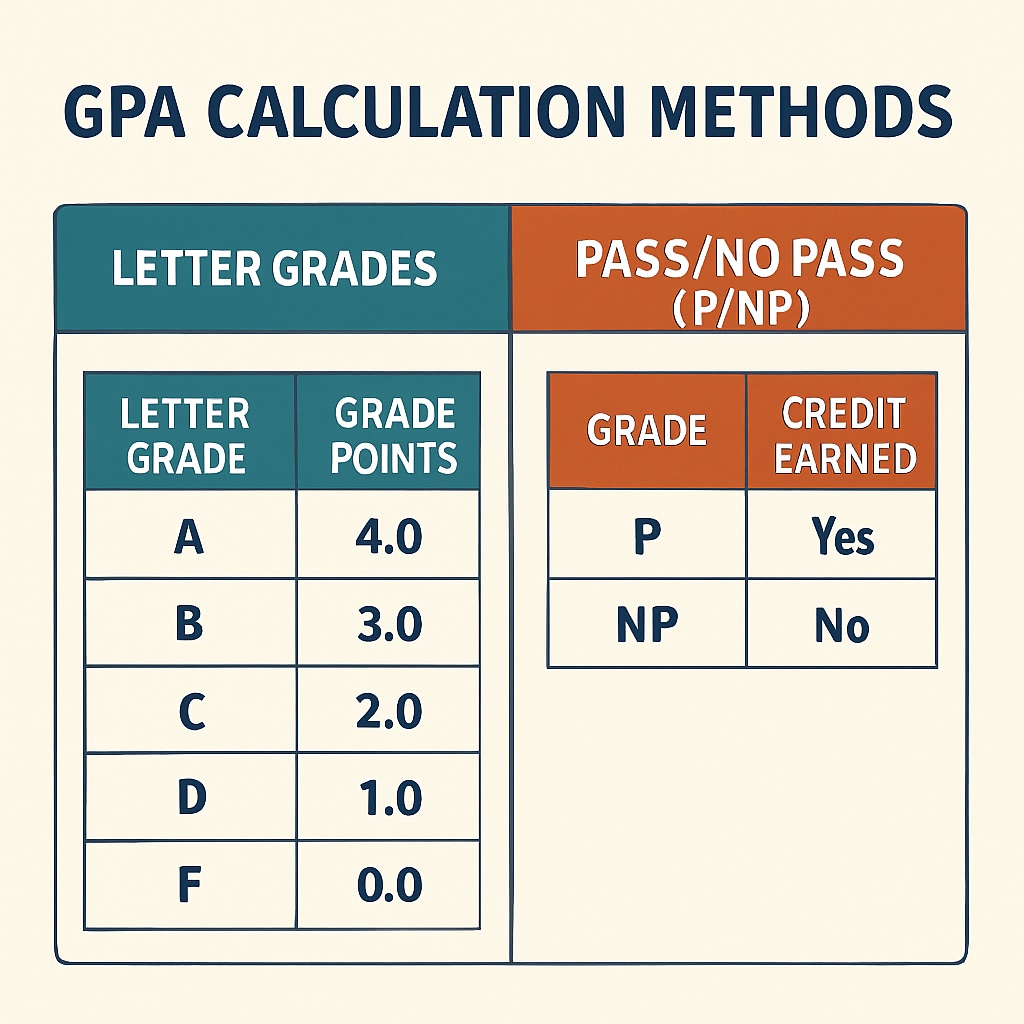Choosing between pass/no-pass (P/NP) grading and traditional letter grades can significantly impact your GPA, academic strategy, and career prospects. As universities offer more flexibility in grading systems for elective courses, students must weigh the benefits and risks carefully. This article breaks down the implications of each grading option and provides a framework for making informed decisions that align with your academic and career goals.
Understanding GPA and Grading Systems
Your grade point average (GPA) serves as a key indicator of academic performance, often used by graduate schools, scholarship committees, and employers to evaluate your achievements. Traditional letter grades (A-F) directly contribute to your GPA calculation, whereas P/NP grading only indicates course completion without affecting your GPA. This distinction makes P/NP grading appealing for students aiming to avoid risks associated with challenging courses.

Advantages and Disadvantages of P/NP Grading
Opting for P/NP grading can reduce stress and allow students to explore subjects outside their comfort zones without the fear of lowering their GPA. However, this grading system is not without drawbacks:
- Advantages: Encourages intellectual curiosity, reduces GPA-related anxiety, and provides flexibility in academic planning.
- Disadvantages: P/NP grades may be viewed unfavorably by competitive employers or graduate programs that prioritize academic rigor.
For example, a student interested in exploring philosophy may choose P/NP grading to avoid risking their GPA, but this decision could raise questions during job interviews about their willingness to tackle academic challenges.

Impact on Career Opportunities
Employers often scrutinize transcripts as part of the hiring process, particularly for competitive roles or industries such as finance, law, or engineering. While a high GPA demonstrates consistency and mastery, excessive reliance on P/NP grading could be interpreted as avoiding challenges. Therefore, balancing P/NP courses with strong performance in graded courses is crucial for maintaining a favorable impression.
Furthermore, graduate schools may have specific policies regarding P/NP grades. Some programs accept P/NP grades for electives but require letter grades for prerequisites. Understanding these nuances can help students tailor their academic records to meet their future goals.
Strategic Framework for Decision-Making
To navigate the choice between P/NP grading and letter grades effectively, consider the following framework:
- Evaluate your goals: Determine whether your primary focus is academic exploration, GPA maximization, or career preparation.
- Assess course difficulty: Opt for P/NP grading in courses that are outside your expertise or particularly challenging.
- Research industry expectations: Investigate how employers in your target field view P/NP grades.
- Seek advice: Consult academic advisors or career counselors to align your choices with long-term objectives.
By combining academic exploration with strategic decision-making, students can optimize their transcripts for both personal growth and professional success.
Readability guidance: Use concise paragraphs, clear headings, and bullet points to enhance readability. Maintain a balance between technical insights and practical advice, ensuring the article appeals to both students and educators.


